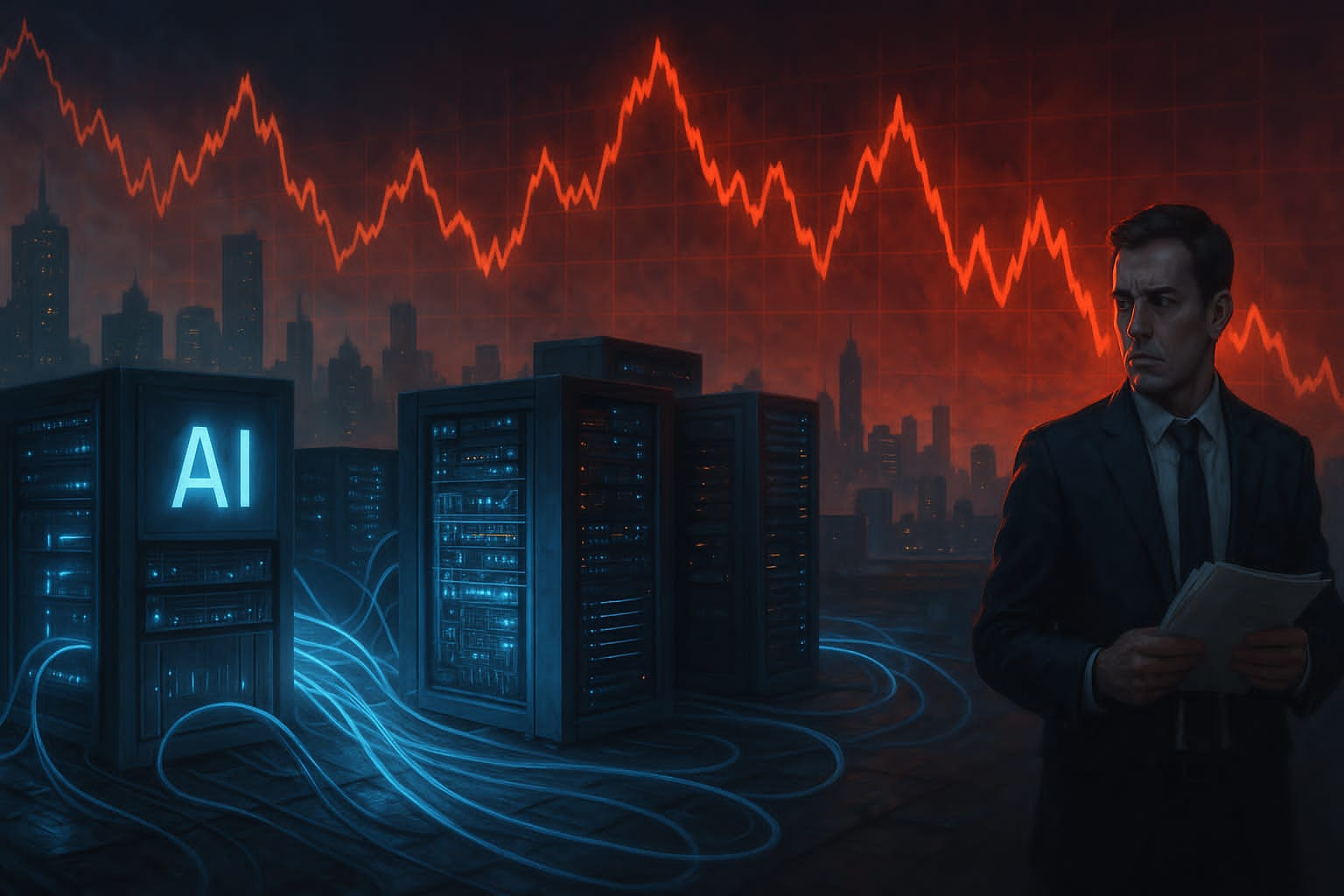AI infrastructure investment is accelerating at breakneck speed, promising a future powered by intelligent machines, automated processes, and limitless data insights. Big Tech is reporting record earnings, startups are raising millions overnight, and governments are rallying behind AI adoption.
But beneath this shiny surface lies a growing concern, this surge in AI infrastructure spending is quietly introducing economic risks that could strain companies, energy resources, and global markets.
Billions Spent, But Where’s the ROI?
Over the past two years, companies like Microsoft, Amazon, Meta, and NVIDIA have spent tens of billions of dollars building AI infrastructure from massive data centers to advanced GPUs and high bandwidth networking gear.
A McKinsey 2025 forecast suggests that AI infrastructure investment could top $1.3 trillion globally by the decade’s end. While this reflects optimism and innovation, it also raises questions about returns. Not all companies will see immediate or even eventual profitability from these investments, especially smaller firms that lack the financial depth of Big Tech.
Overheating the Capital Market
Dr. Elena Farrow, a tech investment analyst at Berkeley Capital, cautions, The scale of AI infrastructure investment is unprecedented, but it’s also disproportionately speculative. Many firms are betting on AI applications that haven’t proven sustainable value yet.
She compares the current trend to the dot-com bubble, where infrastructure was built for products that didn’t exist or failed to scale.
When Scaling Becomes a Risk
CortexAI, a Boston based startup, raised $80 million to build a real time AI processing platform for enterprise solutions. Flush with funds, they built three GPU clusters and rented top tier cloud infrastructure expecting rapid user growth. But within 18 months, the company faced a cash crunch.
Their operational costs especially energy and cloud usage outpaced revenue. CEO Raj Patel reflects. The excitement around AI blinded us. We didn’t account for the real cost of sustaining infrastructure at scale. AI infrastructure investment became our biggest liability.
CortexAI downsized its operations by 40% and pivoted to a leaner model. Their story is not unique it represents a wave of AI first companies running into the financial wall of long term infrastructure maintenance.
AI’s Growing Appetite for Energy
AI infrastructure isn’t just expensive in dollars it’s energy hungry. A single training run for a large language model like GPT-4 can consume as much electricity as 100 American homes use in a year.
According to the International Energy Agency, AI related data centers could consume up to 4% of global electricity by 2030, raising concerns about carbon emissions, regional blackouts, and electricity price hikes.
AI Infrastructure Investment and Environmental Stress
The hidden costs of AI infrastructure investment also lie in its ecological footprint. Tech giants are racing to power their AI clusters with renewable energy, but the demand is outpacing supply. This imbalance may push countries to restart coal plants or overburden fragile grids.
In Texas, where many new AI data centers are being built, summer grid warnings have already become routine. A representative from the Texas Electrical Reliability Council stated, AI demand has grown faster than any other tech sector. We’re now building energy systems to keep up with data not people.
Job Displacement in the Wake of Automation
While AI infrastructure investment promises economic growth, it is also accelerating automation, displacing millions of human jobs. According to a recent MIT and PwC study, automation could affect 40 million jobs globally within the next decade.
Emily Rogers, a 39 year old from Detroit, lost her job in healthcare billing after her company integrated an AI claims processing system. They told me the AI was faster, cheaper, and made fewer mistakes. I couldn’t argue. But losing that job was like losing a part of my identity This emotional and financial toll is often ignored in spreadsheets and board meetings.
Bubble Warnings from Wall Street
Financial experts warn that AI infrastructure investment is inflating tech stocks to levels last seen during the 2000 internet bubble. NVIDIA’s meteoric rise and speculative IPOs in the AI sector have created a frothy market environment.
Veteran investor Michael Langford, who accurately predicted the 2008 financial crash, observes. AI is incredible, but we’re watching investors throw money at companies with no earnings just promises. This doesn’t end well unless we see grounded execution.
He suggests that retail investors especially should be cautious of chasing returns without understanding underlying fundamentals.
The Need for Balanced Growth
To prevent an economic backlash from AI overinvestment, companies and governments must pivot from “build fast” to “build smart.” Here’s what responsible AI infrastructure investment should look like.
Transparent ROI Benchmarks
Firms must disclose not just capital expenditure, but performance metrics of AI systems and real world impact.
Green Infrastructure Incentives
Governments should offer tax credits or grants for companies building sustainable AI infrastructure powered by renewables.
Human Centered AI Adoption
Retraining programs and hybrid models should be deployed to ensure human workers evolve alongside AI, rather than being replaced by it.
A Future Worth Building Carefully
There’s no doubt that AI infrastructure investment is shaping the future. It’s the foundation for self driving cars, AI doctors, personalized education, and smart cities. But like every transformative technology, it brings a responsibility to balance innovation with sustainability, profits with ethics, and speed with wisdom.
As Professor Lina Morales from Cambridge University summarizes. The infrastructure we build today will determine the economic and ethical shape of the world tomorrow. With AI, we don’t get a second chance to lay that foundation right.

